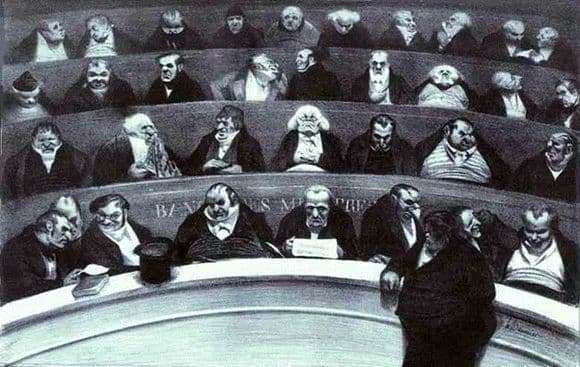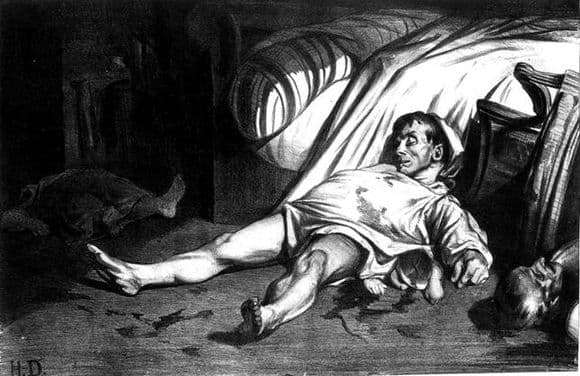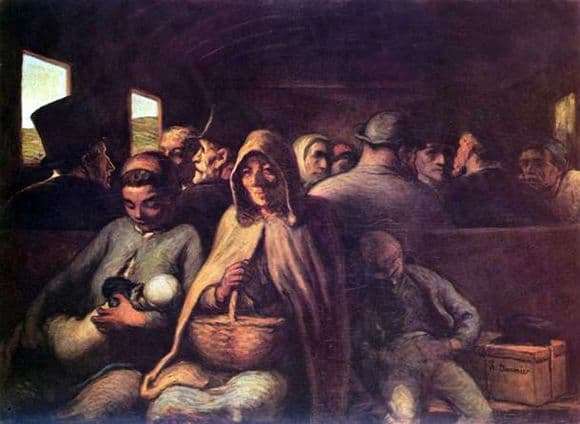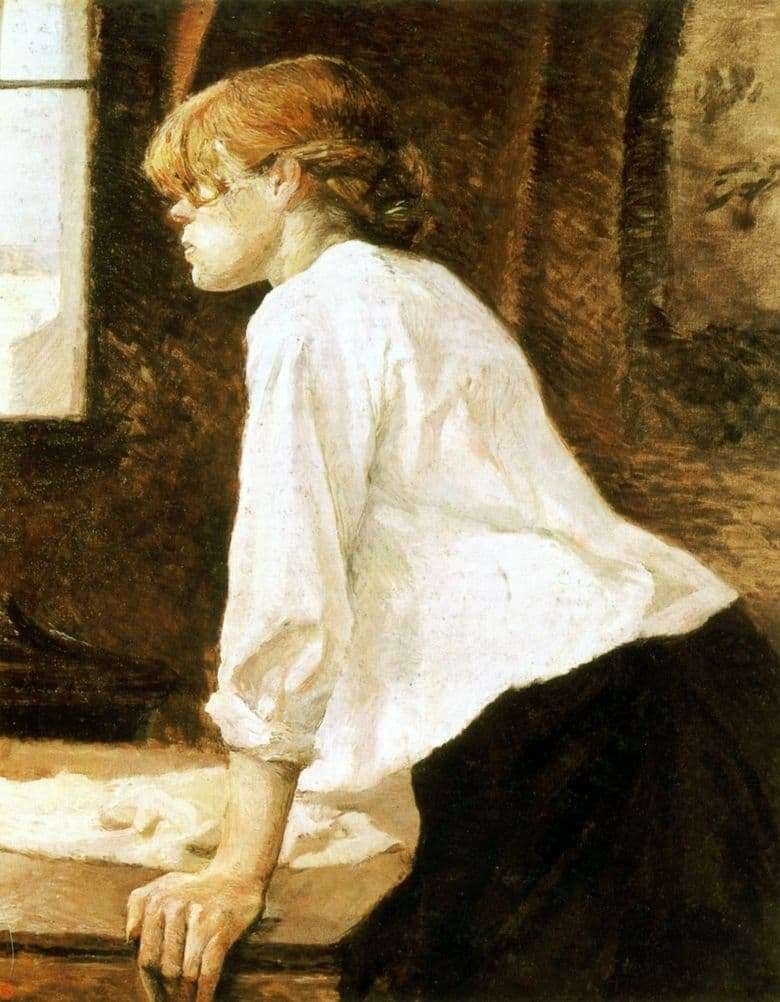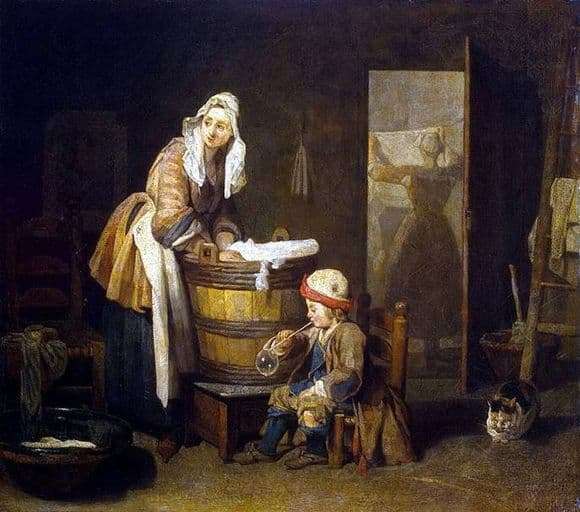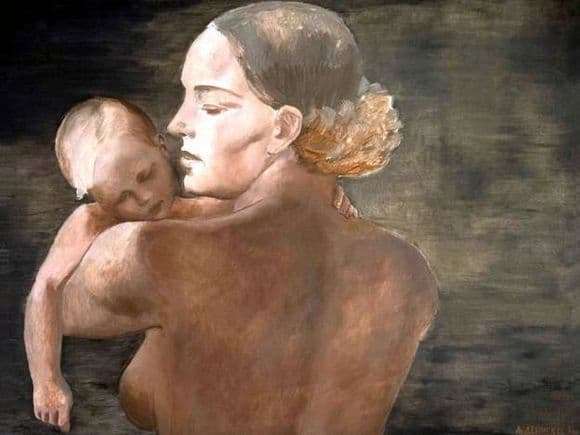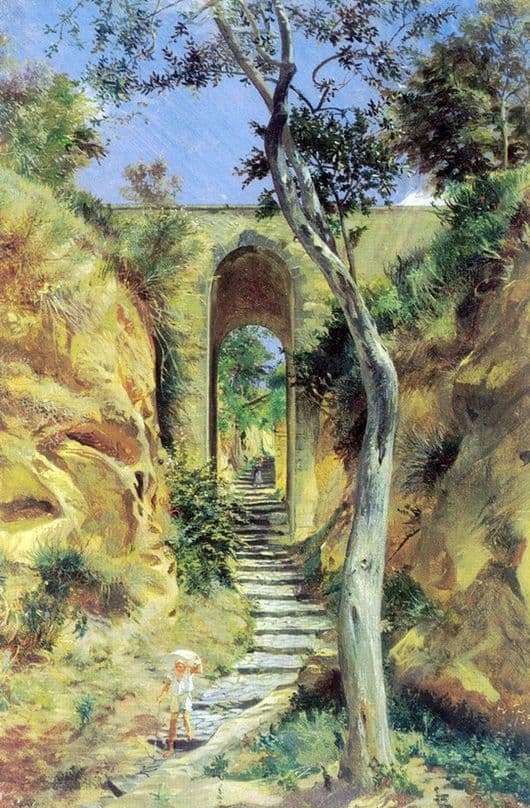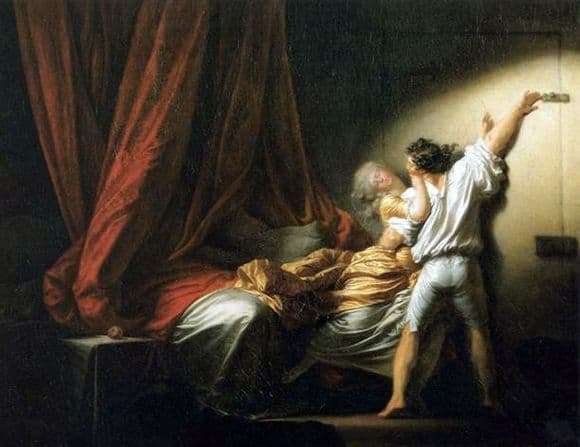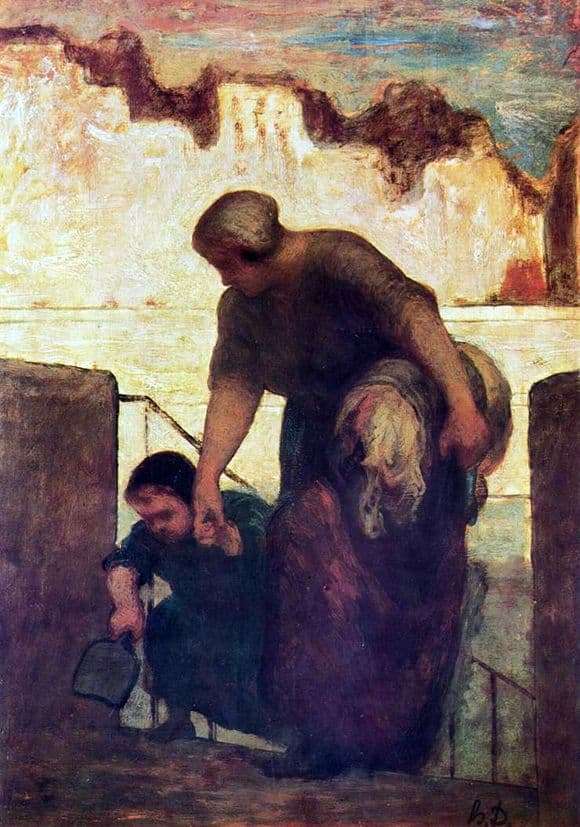
Hard work, carrying away the strength and health of young women, described in his works Honore Daumier. While living on the island, he constantly had to observe this daily women’s work.
Grieving over poor people, Daumier could not be indifferent, bystander, however, there was nothing to help here. These experiences resulted in a whole series of paintings, where the heroines with dignity and nobility carry their heavy cross.
The Laundress was painted in 1861, and the painter managed to convey the feminine image so vividly and monumentally that the society compared this picture with the sculptures of Michelangelo.
In the picture is still young, not an old woman climbs the high stairs with a young son. A bale of wet laundry rolls down lower and lower, large, strong hands turn red from the cold water, but now this is not what the woman cares about. It is evident that the boy hardly climbs the stairs, and his mother supports him with a word.
Patience, calmness and care – this is how the whole image of a woman is painted. No exhausting work, no poverty and wild fatigue drown out these maternal qualities in a real woman. The most unbearable conditions seem to fade into the background, the main life value is this little one, his little joys or sorrows. Why, and the kid himself, it is clear that he was tired.
The maternal theme always disturbed the artist, He was perplexed by the power of the feelings of poor women – until exhaustion working in difficult conditions, women knew how to remain tender, tremulous and affectionate mothers retained such qualities as dignity, nobility, true beauty.
The background of the picture is highlighted in light colors, which is why the figure of a woman, the washerwoman, looks even more powerful, strong, and majestic. It was the greatness of a simple woman that Daumier wanted to emphasize, and he did it.
Description of the painting by Honore Daumier “Laundress”
